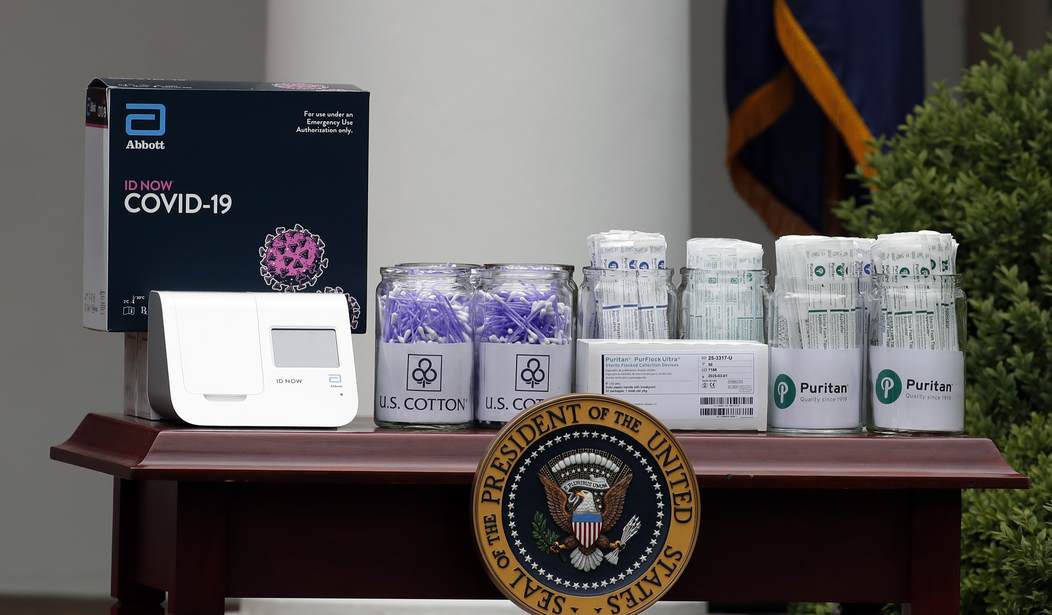After an early bureaucratic disaster - the feds banned private-sector tests and failed to deliver a test that worked - the U.S. has ramped up testing to astronomical levels, dwarfing the rest of the world and any historical comparison.
We average about 1.5 million tests per flu season, and we've now run over 57 million tests for COVID-19. But have all those tests delivered what proponents of mass testing promised? Have they contained the spread and restored public confidence that infectious people are at home, not out and about.
Absolutely not. In fact, by the time most test results are available, the people who were positive are no longer infectious. The tests serve no actual infection control purpose. And the tests that actually would make all the difference are still banned by the FDA.
The CDC reports that most infected people are no longer infectious six to ten days after symptom onset. People with very severe disease can be infectious longer - up to 20 days - but people with severe disease aren't waiting for a test result to find out if they are sick and to self-isolate. The CDC also reports, however, that even though they have never found live, infectious viruses three weeks after symptom onset, the so-called gold standard PCR tests we have been using can show up positive based on non-infectious viral debris for up to 12 weeks.
Recommended
So the mass, industrial-scale testing we're doing, requiring several days turnaround time, isn't letting infectious people know they are positive quickly enough to alter their behavior. And many of the positives are likely meaningless artifacts of months-old infections. It feeds a mass public panic but accomplishes little else.
The tests that we actually need are instant tests that people could take themselves and would provide results in the morning, allowing people to confidently go about their daily activities knowing they are not infectious. These tests, called paper antigen tests, have been developed by a team at MIT that applied for FDA approval back in March. There are several companies ready to mass-produce them with FDA approval. And unlike the PCR tests that cost around $100 per test, the paper antigen tests could cost as little as $2, making daily self-testing cost-effective for most Americans.
In an astonishing display of government stupidity, the FDA's objection to the paper antigen tests is based on precisely the characteristic that makes them vastly superior to the PCR tests: they are far less sensitive. The FDA has used the extreme sensitivity of the PCR tests as a benchmark and refused to issue emergency use authorizations for less sensitive tests. But a test that is so sensitive that it picks up viral debris for months is not a useful tool to prevent infection.
A less sensitive test that is calibrated to show up positive when a person is actually infectious is far more useful. That makes the paper antigen tests not only cheaper and faster, but also better than the 57 million PCR tests that have become a national obsession.
From the beginning, the FDA has made a total mess of testing. Last week they finally introduced a new application for at-home testing. They should approve applications from credible paper antigen test manufacturers as soon as possible - they really should have done it months ago.

























Join the conversation as a VIP Member